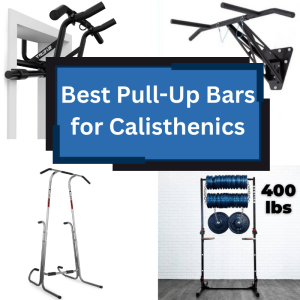Are you thinking about starting a calisthenics workout plan but unsure where to begin? I’ve been there! When I first started with calisthenics, I had lots of questions—and that’s completely normal. In this guide, I’ll help you figure out how to create your own calisthenics workout plan, answer some common questions you should be asking yourself before getting started, and explain the differences between training with bodyweight exercises and using gym equipment. Plus, I’ll talk about when you might want to seek out advice from a personal trainer.
The good news is that beginners tend to progress faster because the neurological and muscular adaptation happens quicker when starting to work out. After a few months, however, the progress will slow and with no adjustment to the training plan, it will hit a plateau. It is therefore important to introduce some kind of structure and timeline into your training.
If you are just getting started and would rather follow a well-designed routine check out our free calisthenics workout plan for beginners.
Differences Between Calisthenics and Weight Training in the Gym
You might be wondering how calisthenics compares to training with weights or machines at the gym. Both approaches can help you reach your fitness goals, but they have some key differences.
1. Bodyweight vs. External Weights
In calisthenics, your body is the only resistance you need. This is great for functional strength—meaning the kind of strength you use in everyday movements. In the gym, you have access to barbells, dumbbells, and machines that allow you to lift heavier weights and isolate specific muscles.
2. Versatility
One of the greatest things about calisthenics is its versatility. You can do it anywhere, and there’s no need for expensive equipment. On the other hand, gym workouts often require specialized machines, meaning you’re tied to a specific location.
3. Progression
Progressing in calisthenics means increasing the difficulty of the exercises. For example, once regular push-ups become easy, you can move on to decline push-ups or one-arm push-ups. In the gym, progression often means adding more weight to your lifts.
4. Muscle Isolation vs. Compound Movements
Weight training often focuses on isolating individual muscles using machines or free weights. Calisthenics, however, emphasizes compound movements—exercises that engage multiple muscle groups at once. This means calisthenics can help you build functional, full-body strength while improving coordination and balance.
How to create a calisthenics workout plan?
It's important to point out that there is no universal training plan that works for everyone. Each person has different needs that ought to be taken into account. This will become increasingly obvious as you get stronger and better, and eventually reach your limits.
As a disclaimer, it's recommended to do a health check or consult with a doctor before starting any workout plan.
Assess your fitness level
This guide is aimed at beginners but there is still a wide variance between people in this group. There are factors such as age, gender, activity level, previous injuries, and obesity just to name a few that will influence what exercises each person can do and at what frequency.
Most of what you learn in this article is applicable to people who lead a sedentary lifestyle as well as those who exercise a couple of times a week (gym, running etc.) but are new to calisthenics.
Decide on your fitness goals
Your workout plan will differ depending on whether you want to lose weight, build muscle, and gain strength. More specifically it will affect the types of exercises you do, the frequency of your workouts, the repetition ranges, and the rest time between sets and workouts.
The guide below shows that the main part of the workout can be constructed to target strength, hypertrophy, or endurance. The scope of this article only allows us to cover the basics but if your goal is to burn fat your workouts will contain more endurance elements. If your goal is to get stronger and build muscle apply the methods best for hypertrophy and strength.
Make a plan you can stick to
There are two important things to consider here. Firstly, create an environment around yourself that makes it easier to hold yourself accountable for exercise.
Think about training cycles
Look at your training plan on a longer time scale and divide it into medium-length time blocks, called training cycles. The optimal training cycle is anywhere between 4-12 weeks long. After each cycle, you will reassess your level and adjust your training plan for the next cycle. As a beginner, you may need a longer ramp-up phase to get comfortable with regular exercise, so be patient.
Understand the hierarchy of the workout
This may seem super basic for a lot of you but let’s cover the structure of the workout first. The core element of the training plan is the workout. Each workout consists of a number of exercises (typically 3-6 exercises). In order to increase strength and hypertrophy we complete each exercise in a few sets (usually 3-5 sets per exercise). The smallest element of a workout is the repetition or “rep” for short which makes up each set. For each rep we can further specify a tempo which is the speed of execution. To simplify I illustrated the hierarchy below.

Structure each workout into parts
Generally, the number of reps per set will depend on the objective we are going after. Depending on whether wet to primarily increase strength, muscle mass, or endurance we can structure a calisthenics workout like so:
Warm-up: (5-10 min)
- Start each training with a short warm up. The goal is to increase your heart rate to get the blood flowing which will deliver more oxygen into your muscles.
- The other objective is to prepare the joints for the coming strain.
- Focus on dynamic stretching.
Skill: (5-10 min)
- This is an optional part. If you want to practice a skill such as a handstand or levers it is better to do so at the beginning of your training while you are still fresh.
Main part: (20-25 min)
Depending on your goal and time choose one or more of these as the main part of your workout. I wouldn't recommend choosing all three within one workout though. In any case, if you do Strength training, start with that. Always leave the Endurance/Conditioning part for last.
- Strength:
- Pick 1-2 exercises you want to focus on. E.g. weighted pull up
- Stay within the 1-5 rep range per set
- Do the sets close to failure (you feel you have one more rep in the tank)
- Rest: take longer rest times between sets, as much as needed (approximately 3-4 mins)
- Hypertrophy
- Pick 3-4 exercises you want to focus on.
- Stay within the 6-15 rep range per set
- Do each set to failure. (The last rep should empty the tank. Not even a half rep possible)
- Rest: take 1-3 minute rest between sets
- Endurance
- Pick 3-4 exercises
- Usually between 15-25 reps per set
- Failure or no failure
- Shorter breaks between sets (around 1 min)
Isolation/Mobility/Cooldown: (5-10 min)
This part is also optional but recommended.
- Do exercises that address any weaknesses e.g. Jefferson curls for hamstring mobility
- Foam rolling: it boosts blood circulation, releases muscle tension, helps with recovery
Apply progressive overload
In order to continue progressing it's important to keep gradually increasing the difficulty of the exercises. Most people hit plateau because they fail to modify their training plan as they progress. If you want to progress you have to challenge your body, otherwise it will simply not get stronger.
“Insanity is doing the same thing over and over and expecting different results.”
Albert Einstein
At the gym you can increase difficulty by simply adding more weight to your exercise. While adding weight in calisthenics is an option for intermediate to advanced athletes, at the beginning it is best to focus on purely bodyweight exercises.
Calisthenics utilizes compound movements that work multiple muscle groups at the same time. Correct execution requires full body coordination and engagement of multiple muscles. It also means that by doing one exercise you will get stronger in other exercises too. Keep in mind that it's important to progress slowly while building sufficient strength to avoid injury. The primary way to increase difficulty in calisthenics is to change the body's position by utilizing body leverage and gravity. Below is an example progression table for a horizontal pull up.
Example: Pullup Progressions
| Difficulty | Exercise | Execution | Video |
|---|---|---|---|
| 1 | Australian pull up (bodyweight row) | Start from the bottom and pull yourself up until the bar touches your chest. Slowly lower yourself while maintaining core tension. You can make the exercise easier if you put your feet closer to the bar. | Link |
| 2 | Negative pull up | Help yourself into the top position of the pull up (by jumping or from a box) and slowly lower yourself until arms are extended. | Link |
| 3 | Pull up | Pull your chest (at least chin) to the bar with extended body position. Stop for 1s and slowly lower yourself. | Link |
| 4 | Explosive pull up | Speed up the concentric phase of the pull up until your chest touches the bar. Lower yourself slowly. | Link |
| 5 | High pull up | Pull your hip to the bar. Keep elbows closer to your body pointing behind you. | Link |
| 6 | Archer pull up | Use wide grip. Pull yourself to left or right hand while the other arm is assisting and extends over the bar. | Link |
| 7 | Negative one arm pull up | Help yourself into the top position and lower slowly down. Keep elbows tucked in and pointing forward. | Link |
| 8 | One arm pull up | Use pronated or neutral grip. Lift your shoulder to the bar. Keep elbows tucked in and pointing forward. | Link |
When to Seek Professional Advice
While it’s entirely possible to create your own calisthenics workout plan, there are times when seeking advice from a personal trainer or fitness coach can be beneficial.
1. If You’re Dealing with Injuries
If you have any past or current injuries, it’s important to consult a professional before starting any workout plan. A personal trainer can help you modify exercises to avoid further injury and tailor your routine to support recovery.
2. If You’re Not Seeing Results
Sometimes, despite your best efforts, you might feel like you’re hitting a plateau. This can be frustrating, but a personal trainer can help you evaluate your routine and make adjustments to keep you progressing toward your goals.
3. If You Want Personalized Guidance
Everyone’s body is different. If you want a program that’s specifically designed for your fitness level, goals, and lifestyle, working with a personal trainer can provide valuable personalized insights.
4. If You’re New to Exercise
If you’re completely new to working out, it can be helpful to start with professional guidance. A trainer can teach you the proper form for exercises, help prevent injuries, and set you up for long-term success.
Conclusion
Creating your own calisthenics workout plan is empowering, and the best part is you don’t need fancy equipment or a gym membership to get started. Remember to take some time to reflect on your fitness goals, assess your current fitness level, and consider how much time and space you have for your workouts. As you progress don’t hesitate to seek professional advice when needed.
Whether you’re aiming to build strength, build muscle, or improve flexibility, calisthenics can help you achieve your goals—all while making fitness fun and accessible.




